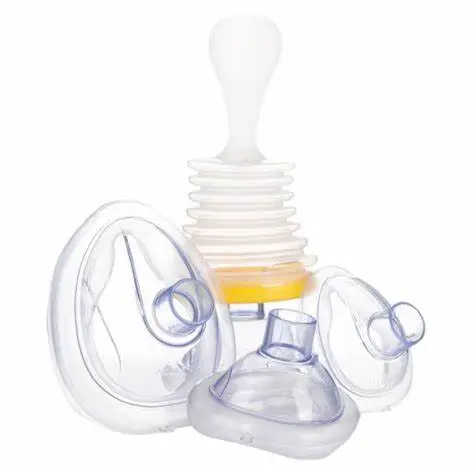LifeVac Original is marketed as a non-invasive suction device designed to tackle airway obstructions when back blows or the Heimlich maneuver fail. It looks like a small plunger fitted with a mask and a one-way valve, and claims to be quick, easy, and effective. But does it truly work in emergencies, or is it more gadget hype than lifesaver?
In this review, I break down what LifeVac is, how it’s supposed to function, what the evidence says, potential risks, red flags, and whether it’s a trustworthy tool or just another product riding the first-aid trend.
Key Takeaways
- LifeVac is a simple suction device used after traditional choking measures fail, using a one-way valve to prevent pushing the obstruction deeper.
- Lab and simulation studies report success rates of 94–99%, but evidence quality is low and mostly based on mannequins, cadavers, and anecdotal reports.
- It lacks formal FDA approval for choking, though it’s registered as a Class I medical device, not a clearance.
- No independent clinical trials in real emergencies, and experts emphasize that it should not replace BLS protocols.
- Reddit users share mixed experiences, some report saves, others label it gimmicky or worry it may delay life-saving first-aid.

What Is LifeVac?
The LifeVac device is essentially a handheld, non-powered suction plunger with interchangeable masks for adults and children. It’s intended for use only after back blows/Heimlich fail, providing a strong vacuum (over 326 mmHg per manufacturer) to dislodge airway obstructions.
It’s registered in the U.S., U.K., and EU as a medical device. Consumers can often receive a free replacement if it’s used during a choking incident.
How It Claims to Work
- Place the mask over mouth and nose.
- Press the bellows to expel air.
- Quickly pull to create suction.
- The one-way valve ensures suction pulls out, without pushing air back into the airway.
The company and some studies suggest it offers an effective backup when standard tools fall short, especially for individuals unable to receive abdominal thrusts (e.g., wheelchairs, pregnant, bedridden).
Evidence & Research
- A 2020 systematic review found LifeVac had 94.3% success in first attempts, but evidence certainty was rated as very low due to limited study quality.
- A 2023 University of Warwick manikin study reported LifeVac succeeded 99% of the time, compared to 82% for abdominal thrusts.
- A cadaveric study also showed effectiveness, but these conditions don’t reflect real-life emergencies.
- No large-scale, real-world clinical trials exist; medical bodies continue to recommend back blows, abdominal thrusts, and CPR first.
Red Flags to Consider
Not FDA-Cleared for Choking
LifeVac is registered, but not FDA-cleared, for choking. The FDA requires rigorous studies for specific use claims.
Evidence Is Limited
Studies are mostly on mannequins/cadavers, with no randomized clinical trials or peer-reviewed emergency use data.
Risk of Delayed First-Aid
Experts caution that reliance on devices like these may delay or distract from proven BLS methods.
Counterfeit Versions
In the UK, the MHRA warns about fake suction devices lacking valves and certifications, only LifeVac and Dechoker are approved
Mixed User Experiences
On Reddit, some parents credit LifeVac with saving their child’s life:
“I watched my 2 year old choke… I didn’t panic… I knew I had my ace, the life vac”
Others call it a gimmick and warn against over-relying on it:
“It feels gimmicky… not licensed… I wouldn’t rely on it.”
Does It Actually Work?
Potentially yes, as a last-resort tool. Lab and anecdotal evidence show it can dislodge obstructions when used correctly after standard interventions fail. However, the lack of real-world clinical trials and FDA clearance means it’s not a replacement for back blows, Heimlich, or CPR. Using it as a first response could risk delaying lifesaving intervention.
Alternatives
- Dechoker
- Traditional BLS Protocols
- Heimlich Maneuver Trainer
Conclusion
LifeVac offers a plausible, device-based backup for choking emergencies, supported by studies and thousands of anecdotal success stories. But it lacks formal approval for choking, and most medical experts still recommend traditional first-aid steps first. It may bring peace of mind, especially for parents or groups where Heimlich isn’t feasible, but it should only be a supplement to, not a replacement for, established life-saving protocols.
Also Read – ProstaVive Review: Legit Supplement For Prostate Health? Read This First!
